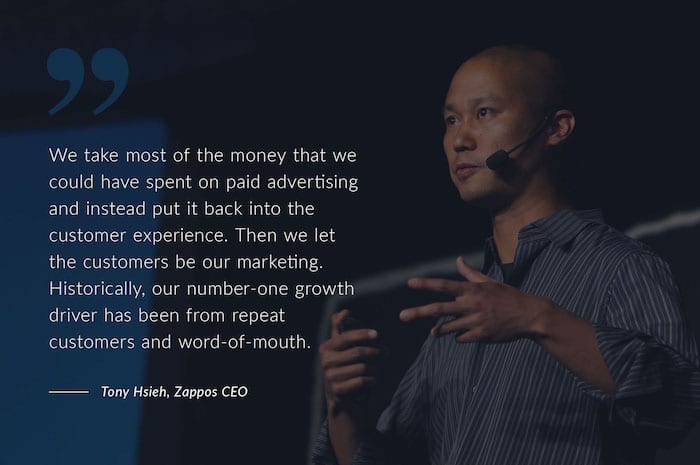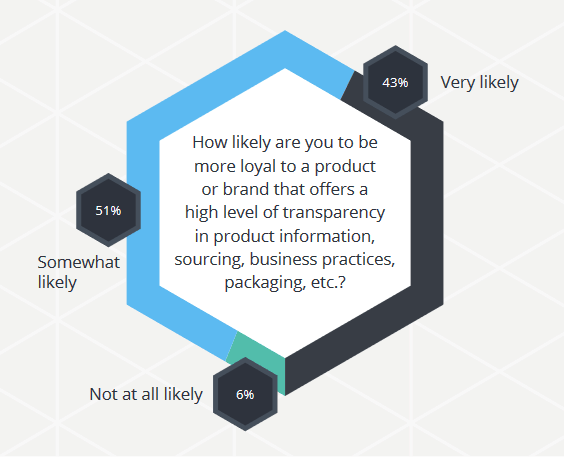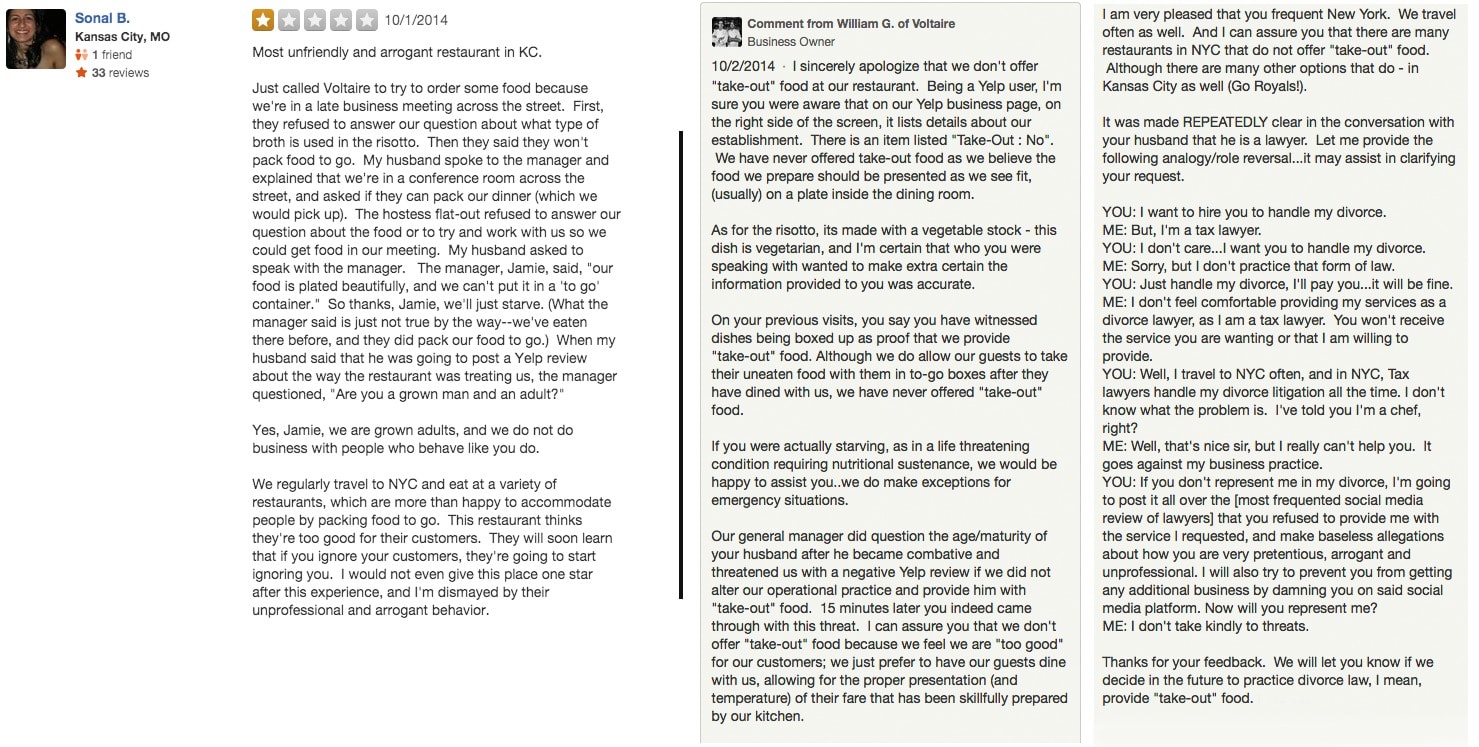
Maybe what’s happened is your company’s fault.
Maybe what’s happened is not your company’s fault.
Regardless, one of your customers has now gone bananas.
And what better way to vent some of their frustration through some good ol’ angry social media posting! On your official business page that is.
The question is: What do you do?
How do you deal with angry customers on social media?
Apologise
It’s not a coincidence that this is the first point on how to deal with angry customers.
Was what happened your fault?
Apologise.
Was what happened not your fault?
Apologise.
Most of the time you should apologise, no matter if it’s your fault or not.
Remember: You aren’t apologising for a mistake you made or didn’t make. You don’t apologise for not meeting your customer’s standards either. You apologise for the bad experience they had.
Did your customer lose any money? Did they spend much of their precious time for nothing? Are they left empty-handed? Show them exactly how you empathise with them. Be specific and write something along these lines:
“We’re sorry for keep you waiting for X hours…”
“I’m sorry you couldn’t find the Y thing you were looking for your husband…”
“We’re sorry that in the end Z cost you $12 more than it should…”

Be specific about what happened and address precisely the bad experience of your customer was. Validate and relate to the customer’s feelings. That way, you will come across as compassionate and understanding of the customer’s issue.
Use their names in your sentences
This is a classic social engineering hack.
It’s when someone instead of saying
“Hey, can you do me a favour“?
you say
“Hey, Nick, can you do me a favour“?
Can you feel the difference? The second sentence is so much stronger and here’s why:
Using someone’s name in a discussion is about recognising their presence. It’s like telling them “OK, my focus is 100% on you. I acknowledge that you are important, please listen to me”. It will make them feel validated as an individual, which makes it more likely that they will like you or the business you are working for.
This is what also gets their attention. The sweetest sound to a person’s ear is their own name.
Whenever someone is personally addressing you, you react emotionally and gives you the feeling that the speaker cares about who you are.
This technique explains why you see your name so often on emails from newsletters you receive in your Inbox or chatbot messages in your Messenger.
Including the first name, or in more formal situations their last name as well, is what we do as well. Every time Roxie, our chatbot, sends a message, she addresses our subscribers with their first name.

For those unfamiliar with email, messaging and marketing automation, I hope I’m not the one who breaks it to you: Marketers don’t write a separate email for every person in their lists. They write {{First Name}}, and they leave the rest to their email marketing platform. It’s magic!
Addressing someone with their name is a powerful tool, that if used correctly and is not abused, can help you charm your listener or audience, both in the physical and digital world.
So the next time you see an angry customer writing on social media, don’t forget to include their name in your response.
Don’t make any excuses
If there is one thing a customer doesn’t want to hear when they are angry is this: a bad excuse.
Customers don’t contact you so they can listen to you excusing yourself. They called because they were looking for someone to offer them a solution.
Common excuses include ignorance, blame shifting and statements of inability.
“Sorry, I’m unfamiliar with [your problem]…”
It’s ok being ignorant, but in this case, it’s never ok to let others know that you are. The least you can do is ask someone, a colleague, your supervisor, your consultant – anyone- before telling your customer you ‘don’t know’.“I Can’t…” should be banned words for customer service. Try starting your sentence with these words instead: “I would love to…” or “I want to do…”. You can’t say can’t.
On another instance, say your customer has told you about their problem, and it’s clear to you that you, as in one person from that particular position, can’t help them. If they want their problem solved maybe they have to fill out a form or talk to a supervisor etc. So what do you do? Well, you do it for them. You should be that someone who will contact any person necessary to fix the problem. You should fill out that form and you should be the one to talk to your boss. Take the first step and let them know you did. It’s only then you should leave them to their own devices.

After you’ve apologised and made sure that you’ve helped the customer as much as you could, you can then go on and excuse yourself. You are fully entitled to briefly explain why your customer didn’t receive the standard of service they expected. However, it shouldn’t precede the previous steps.
Offer a solution
Let the customer know that you are going to handle the issue, regardless of whose fault it is. Introduce yourself as “the one who is now in charge of the situation”. Let them know what you are going to do to solve the problem.
If possible, consider offering more than one solutions and options.
If necessary, ask the client to propose a solution. Doesn’t their problem have a straightforward answer, you can ask them: “What would be an acceptable solution for you?”. More often than not, they will appreciate the gesture, and they will be more favourable towards you or any suggestion you may offer next.
At any given point, you should know your company’s guidelines and what is it you can, and you can’t do. Making a promise, you cannot commit to will only set you back.
Be quick in your response
Convinceandconvert.com did a research with 690 persons from a sample of over 3,000 American social media users. It found that 32% of customers that contact a brand or a company through social media for customer support, expect a response within 30 minutes
Furthermore, 42% of them expect a response within 60 minutes. There is a gap between customers’ anticipated response time, and your actual ability to respond.
To make matters worse, the research states that among those respondents who have ever attempted to contact a brand or company through social media for customer support, 57% expect the same response time at night and on weekends as during normal business hours.
You have to be honest with yourself: Can you handle such high customer service demand?
Your overall digital activity should keep pace with your support. If you are going to post a new Facebook piece of content every day, make sure that responding to an angry customer doesn’t take you more than a day.
Quick response matters no matter what industry you’re in. Same goes for B2B. When your customer has a question, they want an answer. When your customer has a problem, they want it resolved. And fast if they are angry – faster.
Be proactive
Be informative
Keep your customers informed about what’s going on in your business.
If it’s something positive, you can to share it with your audience so they can also be happy about you.
If it’s something negative and it’s going to affect them, you have to share it with your audience, to provide them with some protection from yourself.
Keep your customers informed about any negative changes that you know they will happen in the future.
This can benefit you and your business two-ways: For one, the more customers see your message, the less will complain down the line about said change. Second, even if they miss your message, they can’t blame you later on that you didn’t inform your audience.

– Is a particular function not working as should?
– Is your website going to be down for a while?
– Are your delivery dates going to be affected due to force majeure?
Let your customers know!
Be transparent
Being honest and upfront makes your customers trust you.
Buffer, the popular social media manager, is a company known for its transparency. Transparency for Buffer is a page on its own. This is where you can see Buffer’s salaries, revenue or even what boos Buffer’s employees. Maybe you want their code instead? Go ahead, all of Buffer’s code is free for anyone to use.
“For us, transparency is a core value we’ve chosen to have and we strive to live by that value regardless of whether we are seeing great growth or are going through a more difficult period. We’ve certainly seen some useful benefits of being transparent and we’ve even been lucky to gain some attention as a result of our sharing.
The top benefit we’ve seen is that being transparent has increased the level of trust both between team members and also with our customers. We have shown we are dependable and will keep customers informed of important issues the moment we know about them.”
— Joel Gascoigne, Co-founder of Buffer
Customers value transparency. Transparency is a great way to engage your customers and generate trust. Being transparent means showing what’s happening inside your company. Not being transparent enough could be one of the reasons your customers don’t like you. Transparency is a value on its own.

According to labelinsight’s research, nearly all consumers are likely to be loyal to a brand that
offers complete transparency. Furthermore, transparency ranked highest in a list of factors that motivate consumers to be loyal to a brand, with 25 per cent listing it as their top factor.
Handle every complaint
By the end of the day (or week, or month) one thing is certain, regarding the angry and negative comments your customers make: The number of unanswered negative comments should be no bigger than 0.
Leaving 1 negative comment unanswered could easily mean 1,000 bad impressions.
An unanswered comment signals that the brand is inactive. It also makes it appear that brand is in no position handle the complaint of one of their customers.
On the contrary, responding to complaints has the exact opposite effect. It shows you are responsive and care for your customer, regardless of the opinion they have about you.
Follow-up
After the initial response, follow up a week after, as you would do in any circumstance you’d personally be invested in (e.g. for a job interview). Tell the customer that you are just checking in to see if their problem is addressed.
Granted that their problem is addressed, are they happy with the solution? If yes, thank them for taking the time to reach you and allowing you to resolve their issue. If their problem is still a problem or they are not happy with the given solution, ask them what you can do to assist them furthermore.
A follow-up makes you come across as someone who cares about their entire experience, not just addressing the specific complaint. You give a good impression both for said customer and the public.
To sum-up
To handle angry customers on social media:
- Apologise first and foremost. Be specific about what you apologise for.
- Use their name in your sentences. Show that they have 100% of your attention.
- Don’t make any excuses. If you have to, wait til the right time comes for a brief explanation.
- Offer a solution. More than one solutions if possible.
- Follow up. A week later ask them if everything is alright.
As a general rule of thumb:
- Be proactive. Being informative and transparent can pave the wave for a future event crisis.
- Be quick in your response. If you can’t respond in less than 24 hours, you are doing it wrong.
- Handle every complaint. Unconditionally.
Why is dealing with angry customers important?
People influence people.
A customer talking about their experience with you is worth ten times that which you write or say about yourself. A recommendation from a trusted friend has a higher impact than any advertising message.
Source: livechatinc.com
You should keep in mind that word of mouth is the future of marketing.
As an epilogue, I’ll leave you with this story. This is a real story that went viral about an angry yelp reviewer and the restaurant she visited. Enjoy.

The post How to Deal with Angry Customers on Social Media appeared first on GrowthRocks.